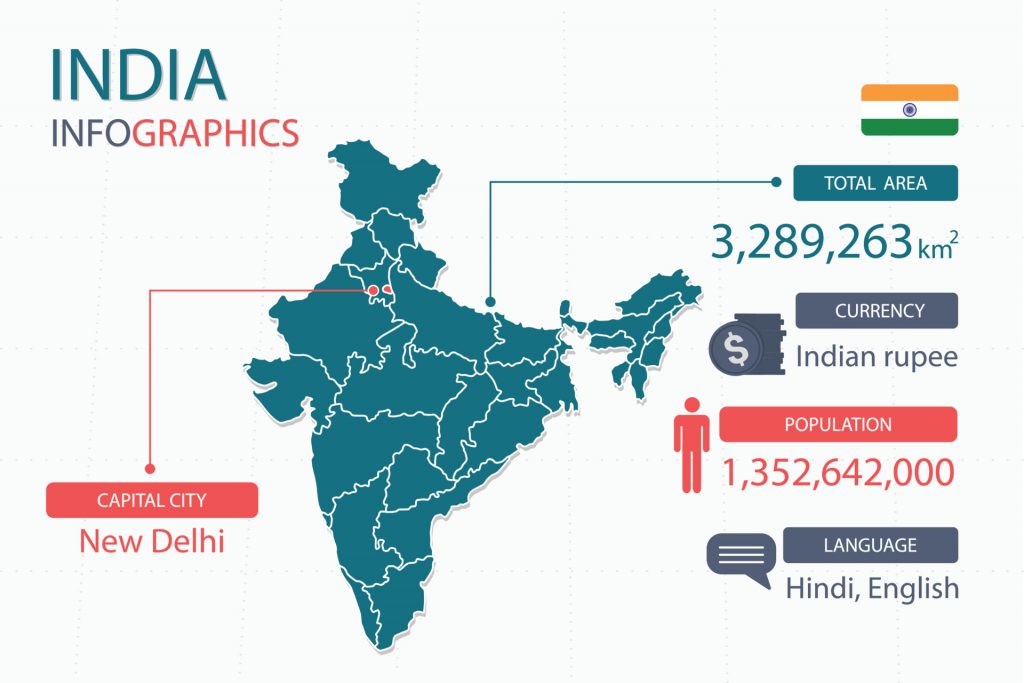The origins of the Gujarati Language
Gujarati is a language originating in India, usually associated with the Indian state of Gujarat. It is the official language of Gujarat as well as an official language in other territories in India including Daman and Diu, Dadra, and Nagar Haveli. In India, about 46 million people consider is as a native tongue, and throughout the entire world, 49 million total.
Some notable characteristics of Gujarati include it being a language where the verb comes at the end of a sentence. It is also a language that utilizes post-positions as opposed to prepositions found in many languages in the West. In addition, many suffixes attach to verbs to express different meanings of tense and aspect. In terms of pronouns, there are separate ones to distinguish between different levels of familiarity or status; however, unlike most European languages, they do not distinguish between gender, i.e. he and she would be the same word.
The Gujarati language holds significant cultural significance as well; it is the first language of Mahatma Gandhi, the person who is most notable to leading India towards independence from British rule, as well as an advocate of peaceful civil rights activism. Besides Hindustani, it is a language that is spoken widely by ethnically Indian people who live around the world.

Linguistically, it is considered a part of the Indo-Aryan family of languages. Other members include Punjabi and Marathi, as well as Hindustani (Standard Urdu and Standard Hindi). When discussing Gujarati vocabulary, Gujarati linguists identify three main categories. The first category are original words that have come to exist in the language from its original Old Gujarati roots. The second main category are Sanskrit-based words. Sanskrit was an important liturgical language of India during ancient times, and its lexicon transferred from the language of Hindi scriptures to everyday speech. The last broad category includes other loan words. These loan words may come from Persian because of historical interaction between Persian-speaking peoples and culture, as well as a more recent group of loan words that come from languages spanning Portuguese to English.
Like many languages in India in particular, Gujarati has been written in a number of scripts but most notably written in Devanagari. Nowadays however, it uses the Gujarati alphabet, based on Devanagari. Unlike other Devangari based scripts, there is no horizontal line above it and some characters are modified. In addition, the numerals used are different.
Gujarati is an abugida; the main components of the writing systems are consonants while vowels play a secondary role. In these type of systems, the vowels attach onto consonants to change the natural sound of the consonant. In English, for example, the letters represent one sound and the letters are combined, with both consonants and vowels playing roughly an equal role.
The Gujarati alphabet contains 31 consonants and 8 vowels. It is written from left-to-right, like many other Indic scripts. However, Gujarati may be unique compared to the majority of its relatives in that it uses more Western style punctuation, such as the comma, the full stop, and the exclamation point.
The history of Gujarati starts with a group called the Gurjars, who spoke Old Gujarati, the language from which Gujarati originates. This group lived in the Gujarat region of India and thus is associated with the Gujarat state of today. In the 12th century, Old Gujarati was already being used a literary language, with works of art and literature being produced. At this time, Gujarati had a very close relationship with another Indian language called Rajasthani. In fact, some scholars argue that Rajsthani and Gujarati might not have been separate languages at this time. In the 13th century, the basis of modern Gujarati poetry had emerged, with Narsinh Mehta considered the founding father.
Linguists consider the next evolution, called Middle Gujarati, to have emerged between the 14th and 17th century. At this time, more sounds, consonants and vowels, emerged in the language, and some of these replaced older versions. In turn, this also had affected grammatical structures to a certain extent.
Modern Gujarati is considered to have existed from the 1800s onward. With the language being more stabilized in terms of phonetics, the beginning of the 1800s marked more cultural advancements that had to do with the language. This includes advancements not only in poetry, even though the advancement in poetry was remarkable, but the development of a modern body of literature.
Nowadays Gujarati is spoken not only in India, but in other parts of the world as well. Regions that contain a decent size of Gujarati speakers include neighboring Pakistan, North America, especially in the New York City and Greater Toronto areas, the Persian Gulf, the United Kingdom, and parts of Africa, including in Uganda, Tanzania, Kenya, and Zambia. With along literary tradition being traced back to 1000 AD and with many institutions promoting both Gujarati language and literature, it remains an important language not only in the Indian subcontinent but throughout the world.
VEQTA can provide you with a perfect Gujarati translator for your Gujarati translation, English to Gujarati translation and Gujarati to english translation for the your targeted locale. Our translations to Gujarati are created with your target audience in mind to meet your expectations.
If you need to translate Gujarati – Get in touch today!
A dedicated team of Gujarati translators who combines Experience, Specialized Subject Matter Expertise with best Translation Practices to deliver quality second to none.
Gujarati Subject Expertise
Gujarati Translators
Gujarati Editors
Gujarati Copywriters
Gujarati Reviewers
Gujarati Voice dubbing
Gujarati Subtitling
Gujarati Transcription


